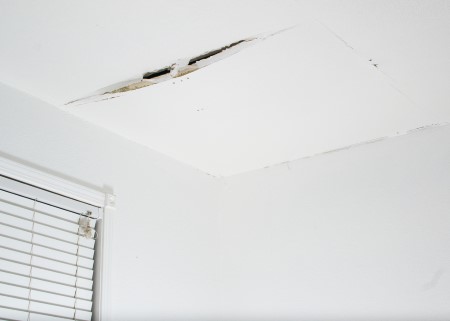Do's & Don'ts of Water Restoration.
Do's & Don'ts of Water Restoration.
Blog Article
Almost everyone maintains their unique idea when it comes to What You Can Do At Home To Prevent Fire And Water Damage.

Water gives life, water intrusion on parts where it's not supposed to be can result in damages. Houses with water damage scent stuffy as well as old.
Water can come from several sources such as typhoons, floodings, ruptured pipes, leaks, and sewage system problems. In case you experience water damage, it would certainly be good to recognize some security precautions. Here are a couple of guidelines on exactly how to handle water damages.
Do Prioritize Home Insurance Policy Protection
Water damages from flooding because of hefty winds is seasonal. You can likewise experience a sudden flooding when a damaged pipe unexpectedly breaks into your house. It would certainly be best to have home insurance coverage that covers both disasters such as natural catastrophes, and emergencies like damaged plumbing.
Do Not Forget to Turn Off Utilities
This cuts off power to your whole house, avoiding electrical shocks when water comes in as it is a conductor. Don't fail to remember to transform off the primary water line valve.
Do Remain Proactive and Heed Weather Alerts
Pay attention to discharge warnings if you live near a creek, river, or lake. Doing so lowers prospective building damages.
Do Not Ignore the Roofing System
Before the weather condition turns shocking, ensure you have a roofing examination. It would be prudent to get this service every year as it can reduce intricate issues. You can stay clear of rainfall damage if there are no openings and also leaks in your roofing. Your contractor will likewise care for malfunctioning gutters or any other indications of weakening. This will certainly stop water from flowing down your walls and saturating your ceiling.
Do Take Notice Of Tiny Leaks
A burst pipeline does not occur over night. Usually, there are red flags that suggest you have actually weakened pipes in your home. For example, you might see gurgling paint, peeling off wallpaper, water touches, water discolorations, or trickling sounds behind the walls. Ultimately, this pipe will burst. Ideally, you ought to not wait for things to escalate. Have your plumbing repaired prior to it causes substantial damages.
Do Not Panic in Case of a Ruptured Pipeline
Maintaining your presence of mind is important in a time of crisis. Due to the fact that it will certainly stifle you from acting quickly, stressing will only worsen the issue. Timing is key when it comes to water damage. The longer you wait, the even more damage you can anticipate. Therefore, if a pipe bursts in your house, promptly shut off your major water valve to remove the source. Disconnect all electrical outlets in the location or turn off the circuit breaker for that component of the home. Call a trustworthy water damages restoration expert for assistance.
Water provides life, water breach on parts where it's not meant to be can result in damages. Homes with water damage odor moldy and also old.
Water damages from flood fees to hefty winds is seasonal. You may discover gurgling paint, peeling off wallpaper, water touches, water stains, or leaking audios behind the wall surfaces. When it comes to water damages, timing is key.
Are Water Mitigation and Water Damage Restoration the Same Thing?
When are Water Mitigation Services Needed?
Water intrusion can come from small sources like a dishwasher leak or larger ones like rainwater causing inches of standing water in a basement. Other instances of damage that call for water mitigation services include:
Sewer backup, sump pump failure, or clogged toilets Toilet wax seal failure Shower pan corrosion Pipe leaks and ruptures Washer or icemaker line breaks HVAC drain line blockage A leaking roof Moisture behind walls Foundation cracks Mold Mold is a good example to illustrate how water mitigation works. We’ve often found that clients we do mold remediation services for had existing water damage issues that ended up leading to the mold damage. When performing water mitigation we look for what’s causing the water problem and for ways to stop mold before it multiplies and becomes a bigger concern.
Are You Currently Experiencing a Water Disaster?
If you’re in the middle of a water intrusion disaster, here are some important dos and don’ts to follow:
Don’ts:
Safety first! Do not enter a room with standing water until the electricity has been turned off! A regular household vacuum should never be used to pick up water. Never use electrical appliance if standing on a wet floor or carpet. Leave visible mold alone. Dos:
Call a water mitigation professional as soon as possible. Mold and other damage can begin within hours of a water intrusion. Mop and blot up as much water as possible. Remove non-attached floor coverings and mats but leave wall-to-wall carpeting removal to a pro. If there are window coverings like draperies that touch the water, loop them through a hanger and put them up on the rod. Remove wet cushions to dry and wipe down soaked furniture. Move valuables like paintings, photos, and art objects to a dry location. Books should be left tightly packed on shelves until it’s determined if they need specialized drying. Prop open closets, cabinets, and drawers to allow them to air out. https://cfrsfl.com/blog/are-water-mitigation-and-water-damage-restoration-the-same-thing/

Hopefully you liked our part about Safety Tips To Prevent Fire And Water Damage. Thanks a lot for taking time to browse our piece. Do you know about another person who is interested by the niche? Take a moment to share it. Thanks for your time. Visit us again soon.
Report this page